Live Cameras at the Tufa Field
These are our views, Camera 1 looking south, (The Field), Camera 2 (Entrance) looking at the entrance to the site, and serving as boundary security cameras as well as recording wildlife.
Click on the image to see and hear real-time (Camera 1 only) .
If you think you have seen something and want to check, you can rewind up to about 5 minutes. The best times to view are at dawn and dusk. There is limited night-vision, but usually enough to see large mammals.
Images are recorded and may make it into our gallery.
Camera 1
What is this?
This is the main Tufa Field. The re-installed plastic reptile fence (October 2025) can be seen in the foreground. This is to isolate the central area, with artificial refuge spots, so that amphibians and reptiles could be translocated to a new site. Previous plastic had degraded due to weathering and has been partially removed, the remainder presents a considerable hazard to the inhabitants food chain, plus adding to the general problem of plastic waste in our environment.
The cutting of paths and removal of some vegetation can be seen, this has reduced the cover for smaller species and reduced hunting grounds for owls and buzzards.
Slightly to the west in the centre or the site is an active Badger sett.
The creature path, made by badgers and used by other animals to navigate the field can be seen in the mid foreground, watch this at night to follow Badgers, Foxes and Deer. .
We sometimes pan this view to see more of the field. At the top of the picture is the developing new Tufa Flush, to add to the existing two established sites further to the right ( out of shot).
Camera 2
This is automatically zoomable and tracks objects of interest.
Live Camera 2
What is this?
This view scans the entire eastern end of the site from entrance to flushes. Before the ‘ecology’ work, this was a summer nettle patch supporting White, Blue and Orange Tip butterflies and providing cover for voles and small reptiles like Slow Worms. Brush cutters and a high-power tractor rotary mower were used to clear this area in 2020 and the boundaries of the Tufa Field. In summer 2021, this recovered slightly and continued recovery in 2022. In August 2023, this vital support for Moths , Butterflies and other nectar feeders was again destroyed, this time during the breeding season. This has once again been destroyed by the 2025 reptile fence field work.
The new reptile fence, in green and black plastic, can be seen as the camera pans.
What you might see.
During the day, especially close to dawn and dusk , you might see Fallow Deer and Foxes , and a wide variety of birdlife including Barn and Tawny Owls, Buzzards, Magpies, Crows, Wood Pigeons, Jays, Collared and Stock Doves. In the autumn there are murmurations of pigeons, before they settle into the adjacent trees, and Pipistrelle and Horseshoe Bats flitting. In the spring there is usually a family of foxes playing in the sun. The summer nettle beds are home to Commas, Common Blues, Painted Ladys, Small and Large White butterflies. Plus the odd blurred person.
We add pictures and videos to our Gallery as they come in, and try to present the best pictures regularly in our Pictures section..
What you won’t see.
The field is home or transit lane to a wide variety of amphibians, reptiles, small mammals and invertebrates which are too small to pick up on the cameras. But it really comes alive at night and in the twilight times at both ends of the day.
There is a limited amount of night vision on the cameras. In summer the field is full of flying insects, butterflies, moths, dragonflies and damsel flies, and you might pick up Badgers, Deer and Foxes again. After dark is when the microphones come into their own*. This part of the city is quiet between about 8pm and 6am and you can hear tawny and little owls, barking deer, screeching pheasant, barking foxes and badger calls. In spring and summer of course there is a dawn chorus that can only be described as cacophonous!
Reptiles include common lizards and slow worms, amphibians include common and palmate newts, common toads, common and pool frogs.
Night time mammals such as hedgehogs, fieldmice and voles that were hemmed in by the plastic fence have returned as the plastic has degraded, itself causing unknown damage to wildlife as it enters the food chain. The field is an important food source for raptor birds, the buzzards and owls in particular. There are also many nighttime insects especially moths which form food for the bats.
We have documented the species we have so far encountered here.
Did you Know?
You can use the Merlin Bird ID app to identify birds picked up on Camera 1. Simply unmute the sound on the feed, turn up the volume on your pc and start the Merlin recording on your phone to identify the birds you can hear. Or if your phone supports split-screen mode (available on Android but only some iPhones), you can run this camera page and Merlin at the same time to identify birds.
Information
Streamed images are low resolution, saved images and videos are high resolution where possible.
Some areas may be masked for privacy.
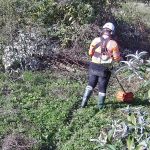
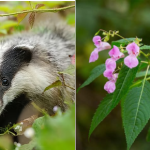
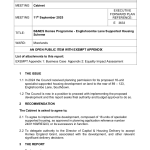
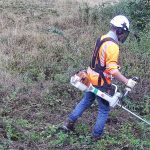
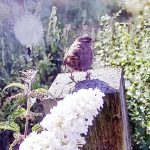
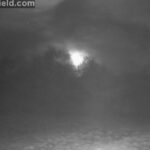
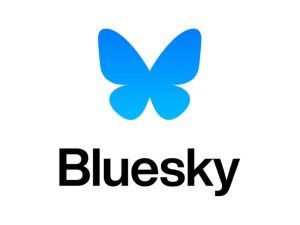






 Total views : 100312
Total views : 100312
